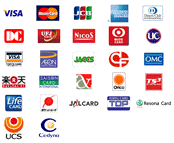In this article, we define the three basic types of contracts and give examples to help you understand when you would use each of them. An effective contract management tool ensures a professional approach to contract management that better facilitates risk management and increased profitability, and provides a clear return on investment (ROI) for the cost-benefit ratio of contract management activities. Best practices for contract management, such as implementing contract management software, improve the quality of the customer relationship and maintain an open line of documented contractual communication. This avoids contractual disputes and escalations. A major disadvantage of this type of contract is that the seller can raise an unlimited or unknown amount that the buyer must pay. For this reason, refundable contracts are rarely used. Here are some types of refundable contracts: It is important that initiated contracts reflect objectives, schedules, project budgets and available resources. They should also reflect rules, specifications and potential risks. A contract management tool connects all aspects of the project, provides an audit trail during reviews, and ensures communication with the right people at the right time. Unit price contracts are paid in accordance with the agreement between you and your customer. The rate can be based on working hours or the actual cost of materials and accessories. Therefore, invoicing the work done by your client is simple.
The number of hours of work is multiplied by the agreed rate of work to obtain the total cost of labour. Materials and consumables will be charged at the purchase price. Unit rate contracts are used when different types of expenses can be closely tracked. As a project manager, you need to know the different types of contracts and the legal aspects of projects. Imagine having to outsource a process or product to external subcontractors or suppliers in the middle of your project. What type of contract would you use for the third party? Such situations are the reason why project managers need to have a good understanding of a variety of contract types so that they can handle contract negotiations effortlessly. Temporary and material contracts are a combination of fixed-term contracts and reimbursement contracts. As with a fixed-term contract, the hourly wage is agreed and determined when the contract is signed. The direct labor rate takes into account real wages, overheads, general and administrative costs, and your profit. However, like a repayment contract, it does not have a final completion date or spending limit.
Since there is no cost limit, your customer is required to pay the actual cost, unless a cap amount is included in the contract. Unit price contracts are what we usually call hourly rate contracts. This type of contract is a hybrid of a refundable contract and a fixed-price contract. For example, if the seller spends 1,200 hours on a $100 per hour project, they will receive $120,000 from the buyer. This type of contract is common for freelancers, and the main advantage of this type of contract is that the seller earns money for every hour spent working on the project. With a refund or fee plus a contract, you will be reimbursed for all your eligible expenses and an additional amount will be paid as a profit. You will be paid for the costs of your project, no matter how much they may exceed the initial estimate. As a result, little emphasis is placed or desired to control costs or complete the project in a timely manner.
This can lead to disputes and potential disputes between your customer and your business. Your profit can be calculated as a percentage of the project cost, as a fixed fee at the time of completion or as a guaranteed maximum amount. Contract management as part of project management deals with suppliers, vendors and/or suppliers and procurement management according to the terms set out in the contracts. Contract approval often involves multiple approvals from different managers and departments, as well as contractors and suppliers. Anyone may need to approve the contract specifications before the final agreement is reached. A repayable contract – also known as a payable contract – is used when the scope of the project is uncertain or the project presents a high risk. The buyer bears all costs, so that he bears the entire risk. Under a refundable contract, the seller works for a set period of time and increases the bill after the completion of the work – a royalty that represents the profit of the contract. Fees may depend on the performance of the selected project or other measures. These are also called lump sum contracts. The seller and buyer agree on a fixed price for the project.
The seller often accepts a high risk with this type of contract. The buyer is in the category of the lowest risks, since the price agreed by the seller is fixed. Make sure that this type of contract has detailed specifications, checklists, and project scope statements on the seller`s side that the buyer will use. Project contracts define parameters and provide parameters for key policies, processes, and relationships of the project company. Effective contract management can help companies and project organizations be more competitive globally, especially those with remote teams and/or those with different time zones and cultures. Contract management helps project organizations examine how project productivity, performance, labor, and inventory affect their growth and profitability throughout the project. He keeps an eye on communication, tracking, change control and other tasks. Under these agreements, the project manager and the client define their respective responsibilities and describe the scope of work. This document can be used by a client who wants to hire a project manager, or it can be used by an independent project manager as a template for the services they provide to their various clients. As a project manager, it is your responsibility to enter into the right contracts with a variety of service providers to reduce risk and deliver the project on time.
You should always consider the right type of contract to provide optimal value for the time and money spent on the project while protecting it from as many risks as possible. Changes to the project are guaranteed throughout the life cycle of the project from the beginning of the work. Changes to the project must be carefully managed and any changes must be communicated to the appropriate parties. All data and information on changes to contractual deadlines, budgets, expenses, etc. must be fully tracked and shared with the teams involved. Manually managing contract management processes can lead to critical challenges, including: Fixed-price contracts, also known as lump sum contracts, have simple terms. You agree to provide certain services in exchange for cash payment. With a fixed contract, you need to know the costs of your project before signing. Fixed-price contracts promote efficiency and strict cost control measures because cost overruns reduce your profits. Contracts are often written with fixed payment milestones. The contract may also include a penalty clause in the event that you miss a completion deadline or perform unsatisfactory work.
It is important that contract management systems are able to integrate standard procedures with details specific to the company`s objectives. In this contract management phase, the type of contract is identified and who is responsible for each task. The planning process includes resources, objectives and people, while developing an overview of the potential risks and challenges of the project. With this type of contract, sellers can try to shorten the scope to deliver projects on time and within budget. If the project is completed on time with the desired quality, the project for this contract is completed. However, if the project is delayed and there are cost overruns, the seller will cover any additional costs. Contracts have many steps and parts. This means that tracking and managing all parts of a contract can lead to many challenges, and even more so when there are hundreds of contracts for a project. Global projects and megaprojects often involve large and complex contracts involving joint ventures, many contractors and subcontractors. The process of signing a contract between the parties involved is the last step in starting the project.
For this reason, the ability to quickly obtain signatures from all parties involved, regardless of distance or location, is crucial to avoid delays. Contract management and project management have a lot of overlap. While responsibilities vary widely between project managers and contract managers, contract managers focus on managing the entire contracting process throughout a project`s lifecycle. Contract management software such as PRISM Contracts provides companies with contract automation, a single, verifiable source of truth, and a real-time view of project progress and contract activity. For project organizations that carry out projects with contractors or companies, it is important that the contract cycle is monitored and controlled. Poor contract negotiations, poorly drafted contracts and/or a lack of oversight can lead to problems that often lead to costly disputes or project delays. Contract management requires time management, attention to detail, risk management, and compliance. Contract management tools and processes help make contract management easier and more efficient.
Project managers can support the efforts of contract managers by providing essential information about the value of specific requirements and realistic ways to achieve the result desired by the client. For example, project managers can assess whether cost and schedule estimates are realistic, analyze project risks and opportunities, and recommend special conditions to align the contract with project objectives. .













